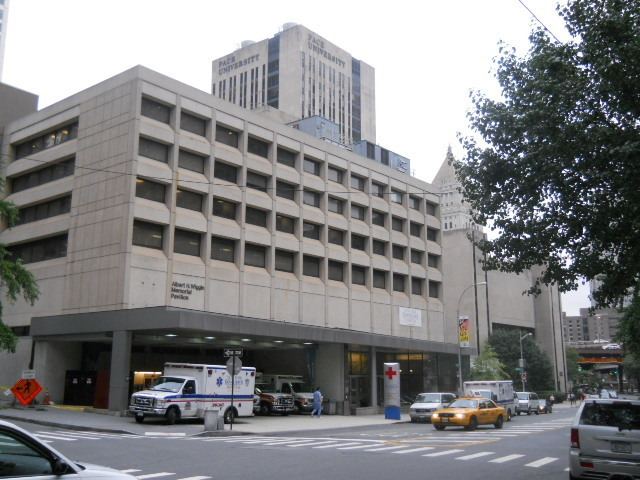Phone +1 212-312-5000 Founded 1853 | Founder Elizabeth Blackwell CEO Steven J. Corwin (2013–) | |
 | ||
Network NewYork–Presbyterian Hospital Address 170 William St, New York, NY 10038, USA Affiliated university Weill Cornell Graduate School of Medical Sciences Hospital types Nonprofit organization, Teaching hospital Similar New York Methodist Hospital, NewYork–Presbyterian/Queens, Mount Sinai Health Sy, Mount Sinai Beth Israel, Maimonides Medical Center Profiles | ||
Newyork presbyterian lower manhattan hospital
New York-Presbyterian / Lower Manhattan Hospital is a not-for-profit, acute care, teaching hospital in New York City and is one of the few hospitals in Lower Manhattan south of Greenwich Village. It is part of the NewYork-Presbyterian Healthcare System and one of the main campuses of NewYork-Presbyterian Hospital.
Contents
- Newyork presbyterian lower manhattan hospital
- 2015 clinical nursing excellence award winners at nyp lower manhattan hospital
- History
- References
The Lower Manhattan Hospital operates 170 beds, and offers a full range of inpatient and outpatient services, as well as community outreach and education. It is also a leader in the field of emergency preparedness and disaster management. The Hospital serves the area’s diverse neighborhoods including Wall Street, Battery Park City, Chinatown, SoHo, TriBeCa, Little Italy, and the Lower East Side. It is the closest acute care facility to the Financial District, to the seat of the City government, and to some of New York’s most popular tourist attractions.
2015 clinical nursing excellence award winners at nyp lower manhattan hospital
History
The name and location of the hospital have gone through several changes since Elizabeth Blackwell founded the New York Dispensary for Poor Women and Children in 1853. In 1857 she opened the hospital under the name of New York Infirmary for Indigent Women and Children at East 7th Street near the present day Tompkins Square Park. As the hospital required more space it moved in 1858 to Stuyvesant Square. One of the hospital's administrators, Anne Daniel, who headed the hospital from about 1894 to 1944 wrote a history of the hospital in the 1930s, entitled ′A cautious experiment.′ The history of the New York Infirmary for Women and Children and the Woman's Medical College of the New York Infirmary, which was serialized in the Medical Woman’s Journal (46) between May 1939 and December 1939. Finally in 1981, merging with the Beekman Downtown Hospital, it relocated to its present site in Lower Manhattan under the name of New York Infirmary-Beekman Downtown Hospital.
In 1991, the hospital was renamed New York Downtown Hospital. In 1997, after three years of affiliation with NYU Medical Center, the name was changed to NYU Downtown Hospital. In 2005 the affiliation with the NYU Medical Center ceased and the hospital reverted to the name New York Downtown Hospital. Following a full merger in 2013 with NewYork-Presbyterian Hospital, it was renamed New York-Presbyterian/Lower Manhattan Hospital.
In 2005 the hospital discharged nearly 12,000 inpatients. The hospital, an affiliate of Weill Cornell Medical College, provides approximately 100,000 outpatient visits and 6,000 surgical procedures annually. In addition, as Lower Manhattan’s only emergency department, the hospital treats 32,000 patients annually in its emergency department and provides more than 5,000 ambulance transports.
In 2006 the hospital introduced a new decontamination unit built as part of the $25 million Lehman Brothers Emergency Room. The project was begun after the terrorist attacks of September 11, 2001, when the hospital treated about 1,500 victims. Before construction of the new facility the hospital's small decontamination unit could handle about 20 patients an hour. The new unit can treat between 500 and 1,000 patients an hour. The design is based on the decontamination unit at Shaare Zedek Medical Center in Jerusalem.
